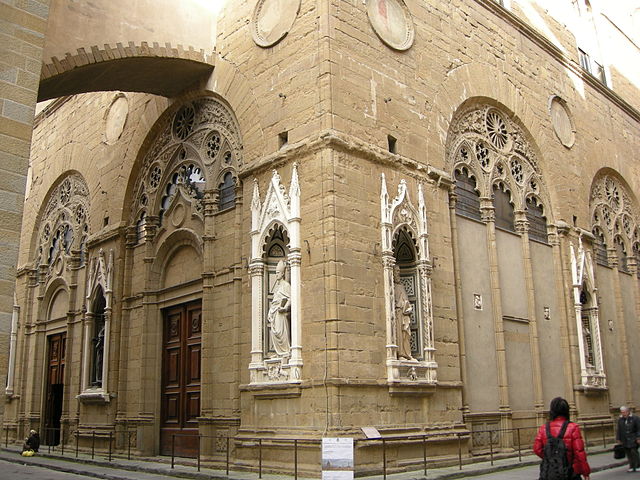Mihrab is a niche in the wall of a mosque that indicates the qibla, the direction of the Kaaba in Mecca towards which Muslims should face when praying. The wall in which a mihrab appears is thus the "qibla wall".
Mihrab in the Mosque–Cathedral of Córdoba
8th-century marble mihrab found in the al-Khassaki Mosque in Baghdad, now housed at the Iraq Museum
Pair of candlesticks from an Ottoman Turkish mosque, late 16th century
Mihrab in the Great Mosque of Damascus
In architecture, a niche is a recess or cavity constructed in the thickness of a wall for the reception of decorative objects such as statues, busts, urns, and vases. In Classical architecture examples are an exedra or an apse that has been reduced in size, retaining the half-dome heading usual for an apse. In the first century B.C, there was no exact mention of niches, but rather a zotheca or small room. These rooms closely resemble alcoves similar to a niche but slightly larger. Different sizes and sculpture methods suggest the term niche was understood. Greeks and Romans especially, used niches for important family tombs.
Niche with a sculpture by Antoine Coysevox, in the Les Invalides, Paris
Mihrab from the Mosque of Cordoba (niche shows the direction of prayer)
Porta Maggiore niches appear between arches.
Niches containing statues on exterior of Church of Orsanmichele, Florence, c. 1380–1404







